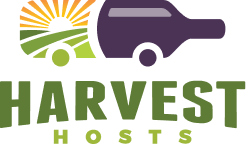10 Tips for Buying a Used RV
When buying a used RV, consider the type, budget, must-have features, shop around, compare prices, ask questions, inspect thoroughly, test drive, check the title, and request a third-party inspection to ensure a quality purchase.
Purchasing an RV is an incredibly exciting experience, but the task itself can be rather daunting. This is especially true when purchasing a used RV, which comes with the added responsibility to consider, check, and research a variety of RV components to ensure you end up with a quality rig. Whether you’re an experienced RVer looking to upgrade, or brand new to the world of RVing, this list of tips should help you to ensure that you don't end up purchasing a lemon. Here, we’ll cover the top ten tips for buying a used RV to help ensure you make the right decision.
Consider:
- What type of RV you want
- Your budget
- Your must-have features
- Shopping around
- Price comparing
- Come up with questions to ask
- Inspect
- Take it for a test drive
- Check the title
- Request a third-party inspection
1. What Type of RV do you Want?
One of the first steps to figuring out what type of RV you may want should be researching the different types of RVs. There are many types to choose from, ranging from towable to driveable and several other unique varieties. Next, be sure to check out our helpful guide on deciding which type of RV is best for you. This article covers a variety of factors to consider to help you really narrow down the list.
After having a good understanding of the types of RVs out there, head to some trade shows to begin viewing and touring some of your favorite types of rigs in person. Take your time to really get a feel for the difference between motorhomes, Class Cs, and towables. Lastly, consider renting an RV similar to your favorite type. Driving and camping in a rented RV can allow your dreams to become more tangible. Don’t worry if you’re new to towing or driving a motorhome. We have your back there too with helpful how-to guides for beginners.
2. Set a Budget
This part can be tricky. Depending on the current vehicle you may or may not already own, your budget may encompass a large range. For instance, if you’re needing to purchase a truck to tow a fifth wheel, the budget will need to be a lot higher than if you already own a truck. Be sure to consider any equipment that may be necessary before hitting the road, as well. This can also impact a potential budget.
3. List out Must-Have Features vs. Desired Features
Any must-have features should be ones that are make or break for an RV. Slide outs could be a non-negotiable factor, for instance. Be sure to do ample research to see what is typically included with types of RVs and what isn’t. Make clear lists to narrow down which features are absolutely necessary for you and which are preferable but not deal-breakers.